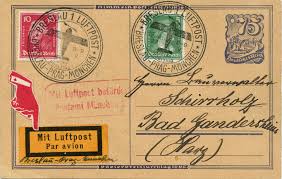Stamp: U.p.u. (Libya 2002)
U.p.u. (Libya 2002)
01 December (Libya ) within release The 125th Anniversary of U.P.U. goes into circulation Stamp U.p.u. face value 200 Libyan dirham
| Stamp U.p.u. in catalogues | |
|---|---|
| Michel: | Mi: LY 2853 |
Stamp is square format.
Also in the issue The 125th Anniversary of U.P.U.:
|
Data entry completed
56%
|
|
|---|---|
| Stamp U.p.u. in digits | |
| Country: | Libya |
| Date: | 2002-12-01 |
| Print: | Offset lithography |
| Perforation: | comb 14 |
| Emission: | Commemorative |
| Format: | Stamp |
| Face Value: | 200 Libyan dirham |
Stamp U.p.u. it reflects the thematic directions:
An anniversary is the date on which an event took place or an institution was founded in a previous year, and may also refer to the commemoration or celebration of that event. For example, the first event is the initial occurrence or, if planned, the inaugural of the event. One year later would be the first anniversary of that event. The word was first used for Catholic feasts to commemorate saints. Most countries celebrate national anniversaries, typically called national days. These could be the date of independence of the nation or the adoption of a new constitution or form of government. The important dates in a sitting monarch's reign may also be commemorated, an event often referred to as a "Jubilee".
A coat of arms is an heraldic visual design on an escutcheon (i.e. shield), surcoat, or tabard. The coat of arms on an escutcheon forms the central element of the full heraldic achievement which in its whole consists of shield, supporters, crest, and motto. A coat of arms is traditionally unique to an individual person, family (except in the United Kingdom), state, organisation or corporation.
Postal history is the study of postal systems and how they operate and, or, the study of the use of postage stamps and covers and associated postal artifacts illustrating historical episodes in the development of postal systems. The term is attributed to Robson Lowe, a professional philatelist, stamp dealer and stamp auctioneer, who made the first organised study of the subject in the 1930s and described philatelists as "students of science", but postal historians as "students of humanity". More precisely, philatelists describe postal history as the study of rates, routes, markings, and means (of transport).



